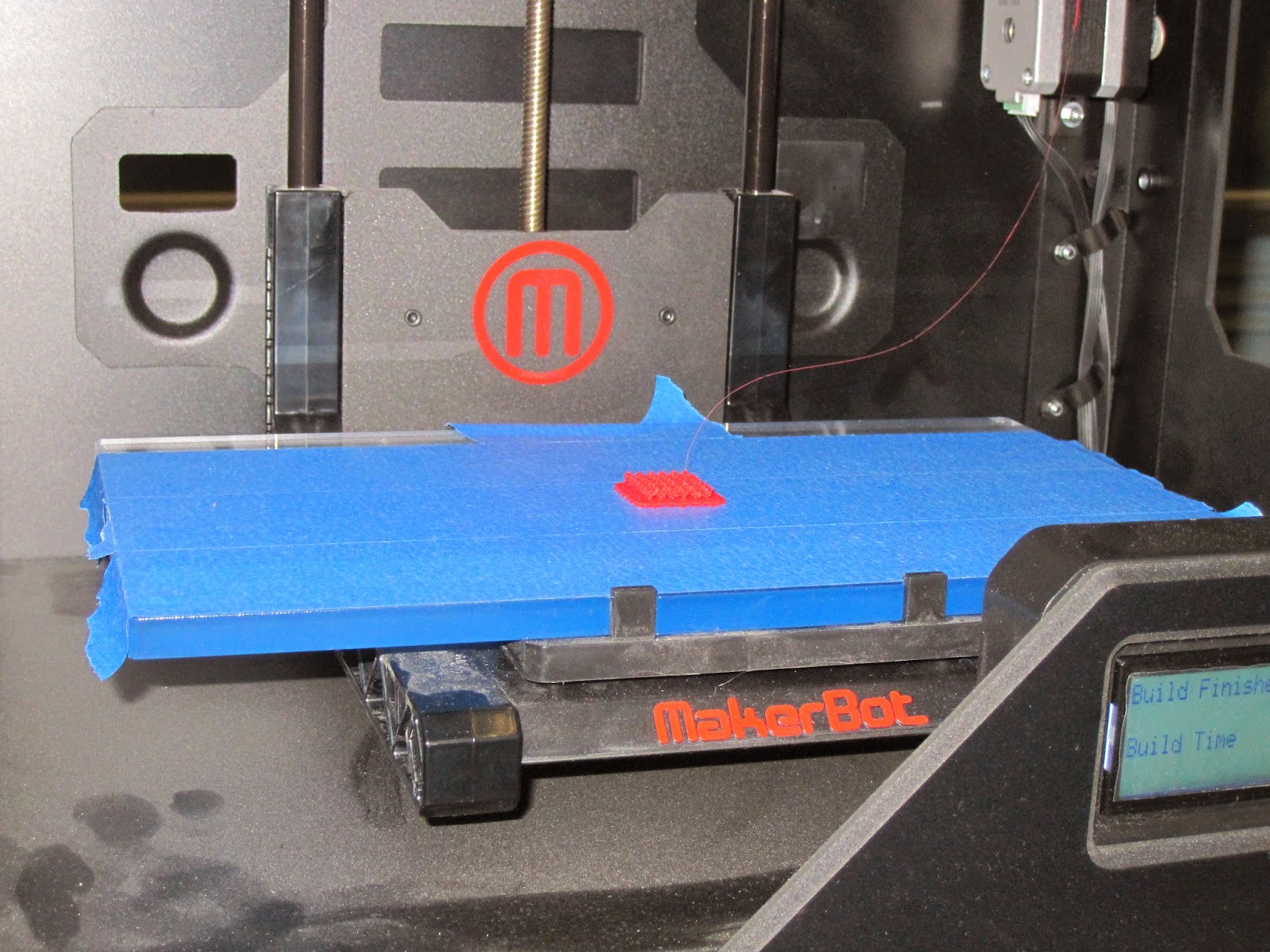Printing the cube was uneventful until the top cross-edges. I was intrigued to note that the PLA bridged the uprights perfectly in the front-back direction, but drooped in the left-right direction. At first I was dismayed, but then I realized it looked interesting, and let the job continue. After a few layers the software shifted direction, and laid down enough support that the drooping spaghetti effect stopped. I'm interested that this happened in one direction only, and, since the faces of a cube should be congruent, wonder why it happened.
Although the photos below show the thing on my print platform, it's after I've lifted it from the plate, and rotated to try to get a good photo. (Canon PowerShot SD970 IS in macro focus mode)
Although my egg holder finished plotting earlier, the cube took over 50 minutes to print, so I didn't have a lot of time left for that. Basically, the function was a sum of sine curves in the x and y directions. Function call was
RegionPlot3D[ Abs[z - (Sin[2*x] + Sin[2*y])] < .1, {x, -3*Pi, 3*Pi}, {y, -3*Pi, 3*Pi}, {z, -3, 3}]
There were a lot of holes in my surface, so I had to step up PlotPoints. Each tick up increases the calculation time for the RegionPlot, but at each increase there were still holes. It wasn't until I got to PlotPoints->300 that the surface looked smooth and continuous. But took forever to calculate.
Time was short, so I decided to try printing as the .stl from Mathematica loaded in MakerWare, which is tiny because of the scaling issues with the .stl format. But, as I was warned, doubling the size would roughly octuple the print time, since it would multiply the volume of plastic used eight-fold.
Print was obviously failing from the start. It wasn't sticking to the print platform. So I cancelled the job, and tried again with a raft. This print was successful, even if ridiculously tiny. But it serves as a proof of concept. That is, my sinusoidal egg holder is a viable design. When I have time, I'll try the printout again at double size. Since this tiny one took just over ten minutes, a double size should take under an hour and a half.



